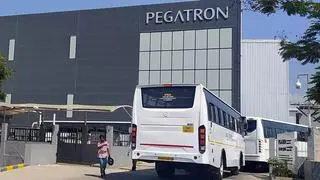Giesecke+Devrient (G&D), the pioneer in SIM cards technology, is eyeing opportunities in the power and infrastructure segment, as these sectors increase their digitisation push.
Talking to BusinessLine , Carsten Ahrens, Chief Executive Officer of G&D Mobile Security said that utilities businesses globally are adopting technology that can help them monitor leakages and control costs better. While India has made significant strides in power generation, particularly in renewables, power distribution companies on an average owe generators about ₹21,000 crore a month.
SIM or Subscriber Identity Module cards, for which G&D holds a patent, stores network-specific information used to authenticate and identify subscribers. It contains a physical card with a chip inserted inside the phone.
eSIM could be the solution
G&D believes that eSIM, a virtual SIM technology can solve some of the problems faced by power sector companies. SIM cards like the ones that go into mobile phones can be used to send information in real time. This, industry watchers opine can reduce power thefts.
“Further, eSIM technology can benefit utility companies to lower the total cost of ownership, simplify deployment of energy devices at scale, improve billing quality and customer satisfaction,” said Ahrens.
Similarly, eSIM can be used in infrastructure projects in areas such as tolling, where there are issues with revenue leakages, said Deval Sheth, Managing Director, G&D MS India. Company officials said that it is in advanced stages of talks with power and infrastructure companies.
The cost of using eSIM works out to be around ₹50-60 per device and industry watchers say that the cost can be recovered in two years.
“In a traditional SIM, there could be issues of tampering whereas in an eSIM, that can be curtailed.
Automotive companies globally have started to buy this technology, particularly with connected cars, wherein G&D manages 10 million vehicle SIMs.
In the future, multiple in-vehicle systems will create huge volume of data on their own and interactions with the cloud, other devices, other vehicles and traffic infrastructure. This data must be protected to keep road users safe, while allowing drivers to benefit from digital mobility services, said Ahrens.
This technology can also be used in public works departments in various municipalities. Already a pilot project is on in Pune where ‘smart’ waste management is being done.
Other cities have taken baby steps in using the technology. Karnataka State Natural Disaster Monitoring Centre (KSNDMC) and Indian Institute of Science (IISc) are collaborating on a project, wherein Water Level Sensors (WLS) are being installed in the flood prone regions across the city. Dharamshala has installed sensor-based underground bins to tackle issues such as garbage overflow, littering and animals getting sick from eating the littered garbage.





Comments
Comments have to be in English, and in full sentences. They cannot be abusive or personal. Please abide by our community guidelines for posting your comments.
We have migrated to a new commenting platform. If you are already a registered user of TheHindu Businessline and logged in, you may continue to engage with our articles. If you do not have an account please register and login to post comments. Users can access their older comments by logging into their accounts on Vuukle.